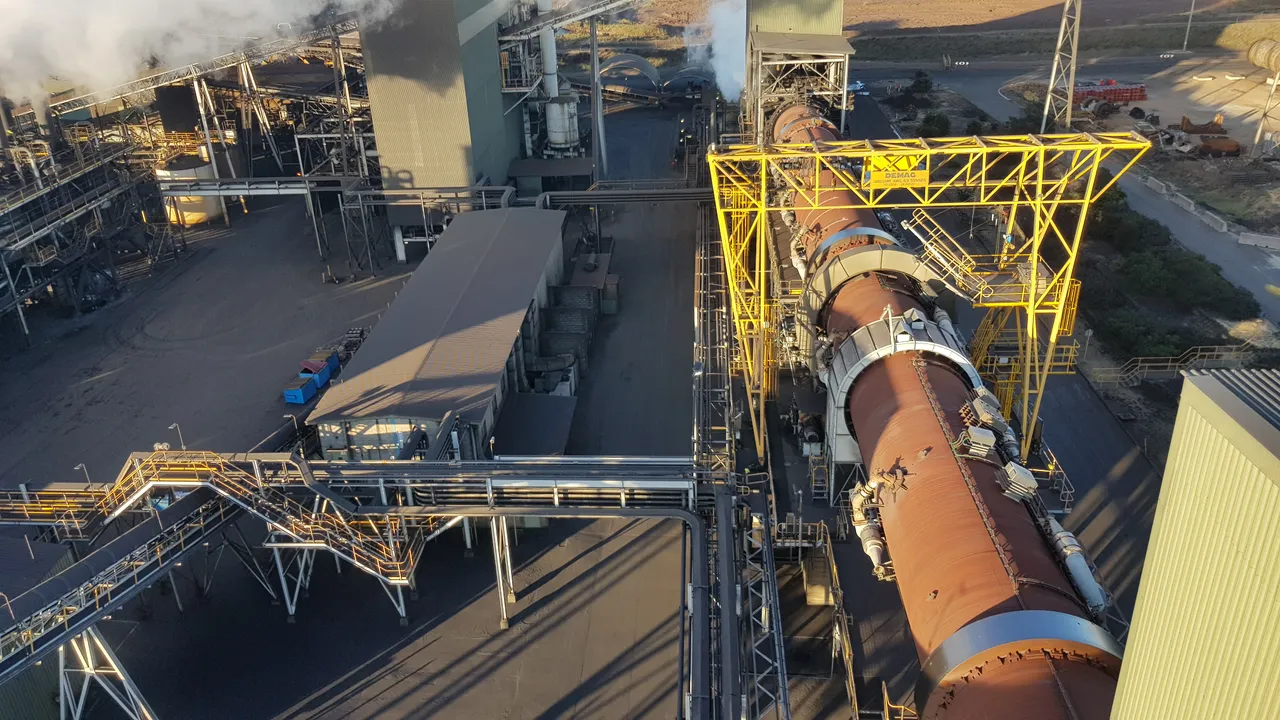G'day all, so I'm a process operator at a mineral sands production facility and whenever I talk about the process of my work people seem interested, so here I am to regal you of the story of a production operator. I won't get into the specifics and I'll try to use every day jargon so as to not lose you guys :), I say dirt farmer because that's what my kids call it, lol

So where to begin, well lets start with what it is that we process. ILMINITE is our main jam and is generally found in coastal areas with scarps (low plains leading to mountains or ranges). Ilminite or TiO2 (Titanium Dioxide) is used in a great variety of everyday products and some you will find surprising. Our product is mainly used in fancy commercial paint, the UV reflective kind that lasts longer on homes and buildings. But it also can be found in products like toothpaste, glazing on donuts and sunscreen, it's the UV reflective properties and the pigment (white) that are the reason for it's use, it's an inert element so is not harmful or retained in the body, a quick google (https://www.chemicalsafetyfacts.org/titanium-dioxide/) will show how common it is in everyday products.
So it's been dug out of the ground, now what. Well the ground is not pure ilminte (we wish!) so it has to be cleaned and separated. That's where we come in. We receive it in the form of HMC (heavy Mineral Concentrate) which is basically the dirt from the ground. This stuff contains heaps of different minerals / elements that are bound together e.g. a grain of sand consists of things like quartz, iron, rutile etc. First of all we need to separate as much of the stuff we don't want, like the quartz and thorium. This goes through a process called magnetic separation, which is basically rows of machines with thin plastic belts on rollers with a magnet at the end. The stuff we want has iron bound into to it so that gets captured and the stuff we don't want (the quartz etc) gets sent to recovery or waste (more on that later). After it has been separated it gets stored in really big silos ready to move onto the next stage.
Because of the different places we get the dirt from, it has different grades /quality. So after the initial phase of separation it has to be blended together to ensure a consistent feed type. It is now ready to be put into a massive rotary reduction kiln, well almost, it still requires some more blending of coal (for thermology reasons) and sulphur (for reaction purposes). This is done in transit and passes over many conveyor belts and bucket elevators on it's way. The reason why it is heated up in a kiln is because of the iron content bonded to the ilminite, and this process 'cracks' open the particles and releases some of the iron.
Right now after it goes through the kiln, it is hot! I'm talking lava hot so it needs to be cooled down, this is achieved by running it through a cooler (original name I know), this looks like the kiln but instead of heating the dirt it is cooling it and this is done by spraying water on the outside of the vessel.
Ok so we have the cracked dirt and now it's called Reduced Ilminite (RI). Some of the iron has melted out but not all of it, some it is so small or so well bonded it refuses to get out (stubborn little bastards). So it now moves on to another stage of separation (seriously?). This next process is called Aeration and basically gets mixed with ammonium chloride (salt) in huge vats and is cooked over about an 11hr process. What this does is rusts the iron out so it can be separated once again (yeah, yeah I know).
So once again we need to separate, this time it's a wet process of separation and for that we need cyclones! No not the tropical weather event but a series of 'hoppers' (tubs) that cause the wet material to swirl around like a whirl pool, where the heavy stuff (the stuff we want) heads down the underflow and the lighter stuff (the stuff we don't want - the iron oxides) heads up to the overflow. This process is repeated until the material is at a grade / quality that we want. It undergoes some other stuff along the way but not really important. Now surely that's the end of separation?? Well almost, here's the thing the materials still wet and our customers don't really want the water and definitely don't want to pay for the transport of all that extra weight!
So the next step is to dry it! The first part is we suck as much of the moisture out by running the dirt over a cloth belted conveyor with a vacuum under it and this ain't no regular hoover let me tell you!
We're almost there pilgrims! So now it's had as much moisture sucked out of it as we can but is still too wet, well then it's good we got an industrial sized gas fired dryer! This thing basically blows the dirt around inside it under extremely hot conditions and then spits it out onto one final conveyor into a storage bin ready for transport.
Phew, we made it, now as complicated as all that may sound, I've simplified the hell out it and there are 100 more steps involved with a lot more smarter people than me making process changes all day everyday to achieve the quality of a product required by the customers. I know I said I'd get more into the waste recovery a little later but I think that's enough for now. I might dedicate another post to that subject at another time.
If you made it this far, cheers for reading
-Platypus-Dundee

